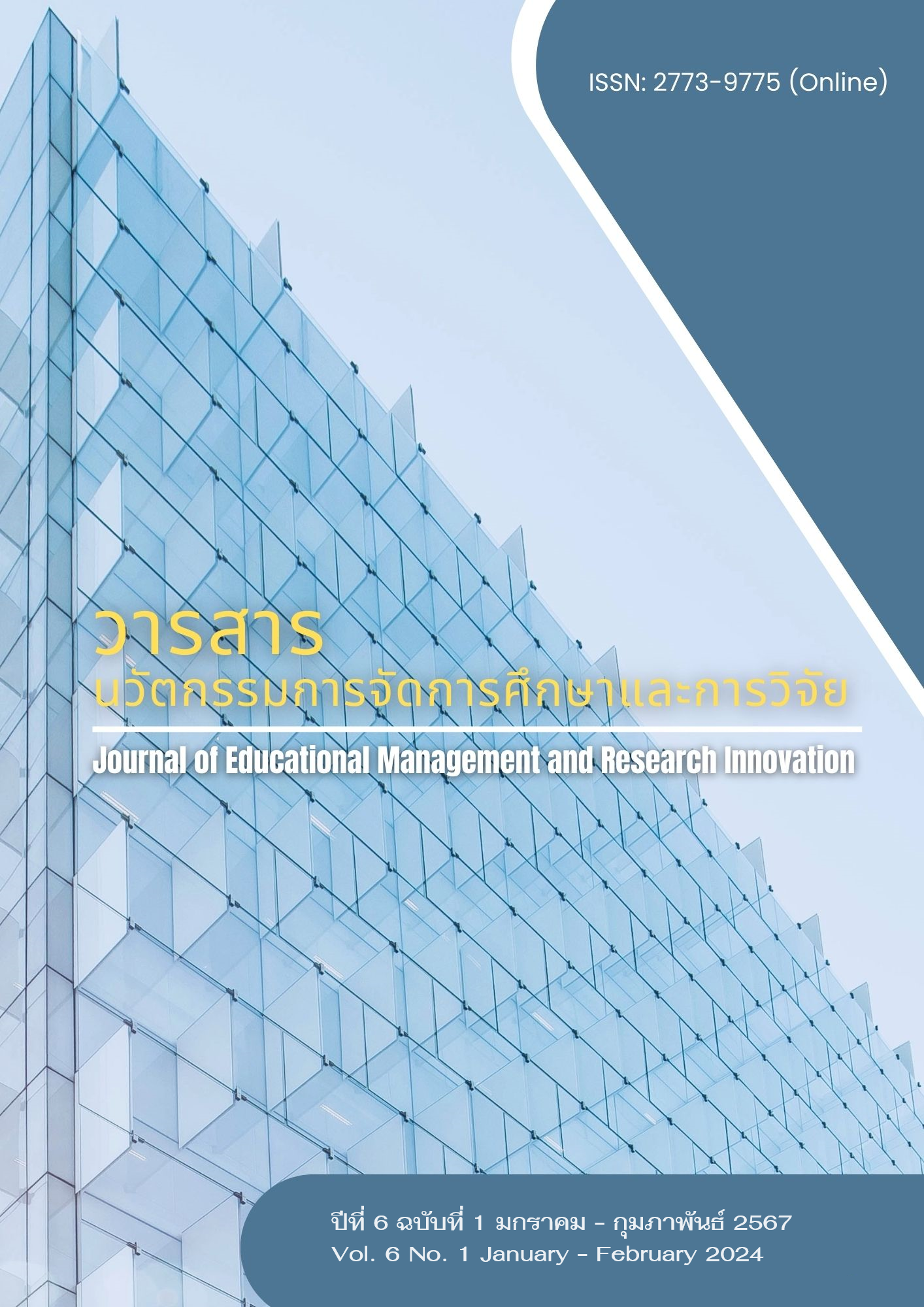Factors Affecting Tablet Computer Buying Behavior After the COVID-19 Situation of Undergraduate Students in Bangkok Thonburi University
Main Article Content
Abstract
This article aims to 1) study different personal factors affecting tablet computer purchasing behavior; 2) study marketing mix factors affecting tablet computer purchasing behavior; Technology acceptance affects tablet computer purchase behavior. After the COVID-19 situation of undergraduate students in Bangkok Thonburi University This research is a quantitative research. The sample consisted of 400 undergraduate students at Bangkok Thonburi University using a stratified random sampling method. Using a questionnaire as a tool to collect data. Statistics used in the analysis include frequency, percentage, mean, standard deviation. Hypotheses were tested by one-way analysis of variance and Pearson's correlation analysis. The research results found that;
Important research results: 1) personal factors found that different demographics It does not affect the behavior of purchasing computer tablets. after the COVID-19 situation, except for the chosen field of study and 2) marketing mix factors that affect computer tablet purchasing behavior after the COVID-19 situation Overall, it is at a high level. 3) different technology acceptance factors affect tablet computer purchasing behavior. After the COVID-19 situation Important factors in students' decision to purchase a tablet include their chosen field of study. Marketing mix factors (7P) and Technology adoption factors.
Article Details

This work is licensed under a Creative Commons Attribution-NonCommercial-NoDerivatives 4.0 International License.
References
ชฎารัฐ ขวัญนาค และ ศรายุทธ อินตะนัย. (2566). อิทธิพลของการยอมรับเทคโนโลยี และการรับรู้คุณค่าของเว็บไซต์ที่มีต่อการตัดสินใจซื้อ ของผู้บริโภคในพาณิชย์อิเล็กทรอนิกส์แบบธุรกิจกับผู้บริโภค. วารสารวิชาการและวิจัย มหาวิทยาลัยภาคตะวันออกเฉียงเหนือ, 13(2), 89-103.
ดวงใจ คงคาหลวง, พงษ์สันติ์ ตันหยง และ วัลลภา วิชะยะวงศ์. (2566). ตัวแบบปัจจัยเชิงสาเหตุที่มีอิทธิพลต่อความภักดีของผู้บริโภคอาหารออนไลน์. วารสารสหวิทยาการมนุษยศาสตร์และสังคมศาสตร์, 6(1), 308-326.
แท็บเล็ตคอมพิวเตอร์. (2566). สืบค้น 20 มิถุนายน 2566, สืบค้นจาก https://th.wikipedia.org/wiki/แท็บเล็ตคอมพิวเตอร์.
พิชามญชุ์ เลิศวัฒนพรชัย, พงษ์สันติ์ ตันหยง และ ผ่องใส สินธุสกุล. (2566). ปัจจัยที่มีอิทธิพลต่อการตัดสินใจใช้บริการสั่งอาหารแบบเดลิเวอรี่ผ่านสื่ออิเล็กทรอนิกส์ในจังหวัดนครปฐม. วารสารสหวิทยาการมนุษยศาสตร์และสังคมศาสตร์, 6(1), 141-156.
พีรวัส ปทุมุต์ตรังษี, จรูญ ชำนาญไพร และ เบญจฐา วัฒนกุล. (2566). การยอมรับเทคโนโลยีที่มีผลต่อการตัดสินใจซื้อสินค้าออนไลน์ของวัยรุ่น ในอำเภอปากเกร็ด จังหวัดนนทบุรี. วารสารนวัตกรรมการจัดการศึกษาและการวิจัย, 5(1), 49-60.
ฤทธิ์เจตน์ รินแก้วกาญจน์. (2562). ปัจจัยส่วนประสมทางการตลาด 7Ps และปัจจัยด้านการให้บริการที่มีอิทธิพลต่อความพึงพอใจของผู้ใช้บริการคลินิกการแพทย์แผนจีนหัวเฉียว กรุงเทพมหานคร. วารสารบริหารธุรกิจและสังคมศาสตร์ มหาวิทยาลัยรามคำแหง, 2(1), 92-106.
วชิรวัชร งามละม่อม. (2558). แนวคิดและทฤษฎีที่เกี่ยวกับลักษณะทางประชากรศาสตร์ 2016. ค้นเมื่อ 5 พฤษภาคม 2566, จาก http://learningofpublic.blogspot.com/2015/09/blogpost_11.html
วัสสิกา รุมาคม และ คณะ. (2565). การบริหารสถานศึกษาในยุคความปกติใหม่หลังวิกฤตโควิด-19. วารสารมหาจุฬานาครทรรศน์, 9(6), 17-30.
ศิริวรรณ เสรีรัตน์ และคณะ. (2552). การบริหารการตลาดยุคใหม่. กรุงเทพฯ: ธรรมสาร.
สุกัญญา พยุงสิน. (2556). พฤติกรรมผู้บริโภค. สืบค้นวันที่ 25 มิถุนายน 2566 จาก http://202.28.120.18/ 2009/online/main_MK2/main.html.
สุทิพย์ ประทุม และ สรัญณี อุเส็นยาง. (2565). การยอมรับเทคโนโลยีสารสนเทศในยุควิถีชีวิตใหม่. วารสารลวะศรีมหาวิทยาลัยราชภัฏเทพสตรี, 6(1), 1-18.
Ajzen, I., & Fishbein, M. (1980). Understanding Attitudes and Predicting Social Behavior. New Jersey: Prentice-Hall.
Azizah, F. D., Nur, A. N., and Putra, A. H. (2022). Impulsive Buying Behavior: Implementation Of IT On Technology Acceptance Model on E-Commerce Purchase Decisions. Golden Ratio of Marketing and Applied Psychology of Business, 2(1), 58-72.
Davis, F. (1985). A Technology Acceptance Model for Empirically Testing New End-User Information Systems: Theory and Results(Doctoral Dissertation). MIT Sloan School of Management Cambridge.
Feng, C. P., & Chuan, C. S. (2013). Enhancing Competitive Advantage of Hospitals Through Linguistics Evaluation on Customer Perceived Value. Journal of American Academy of Business, 5, 481-485.
Kotler & Keller. (2012). Marketing Management. (14th ed.). Pearson Education.
Lei, W., Teerapornlertratt, P., Phuvakeereevivat, A., & Kumboon, B. (2023). The Development of Value Co-creation of New Retail in Taian City, The People’s Republic of China. International Journal of Multidisciplinary in Management and Tourism, 7(1), 1–12.
Mathieson, K., Peacock, E., & Chin, W. W. (2001). Extending the Technology Acceptance Model: The Influence of Perceived User Resources. ACM SIGMIS Database: the DATABASE for Advances in Information Systems, 32(3), 86-112.
McCarthy, E. J., &. Perreault, W. D. (1990). Basic Marketing. (10th ed). Illinois: Ridchard D. Irwin.
Yamane, T. (1973). Statistic: An introductory Analysis. (3rd ed.). New York: Harper and Row.

